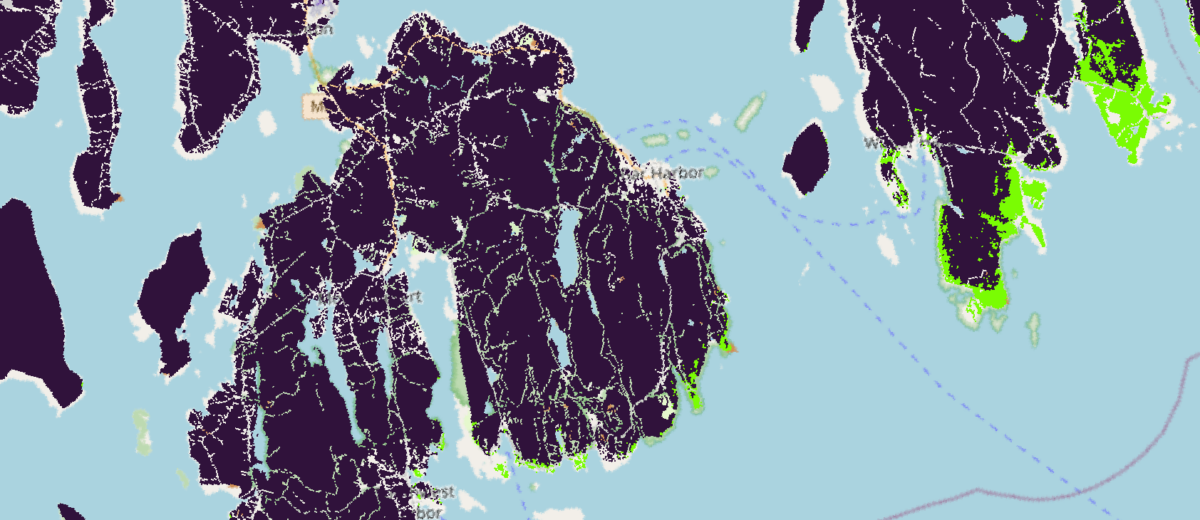In Acadia, many plant species are living at the southern or northern edge of their geographic ranges. Many current habitat locations may become inhospitable under climate change. However, there are “refugia” sites projected to remain suitable for the species, despite increases in average temperature.
Two such species are black crowberry (Empetrum nigrum) and three-toothed cinquefoil (Sibbaldiopsis tridentata), which grow on rocky shores, cliffs, and islands (and, in the case of cinquefoil, mountain summits). Both protect soil from erosion and support insects, birds, and other wildlife. Both are “disjunct populations” growing separate from the rest of their species in arctic tundra or alpine environments.
Models of current and future temperatures identified refugia sites for both species. Schoodic Institute scientists and Earthwatch volunteers are studying cinquefoil and crowberry at five refugia and four non-refugia locations, monitoring an average of 60 sites at each location, and recording the absence or presence of the study species. If they find the species present, they collect data on species’ health and phenology, noting if the plant has reached key periods such as first leafing, flowering, or fruiting. Scientists can then compare the data to learn if the models are correct in identifying refugia, and therefore can be applied by park managers to focus protection efforts.
Acadia National Park has refugia sites because of the mountainous landscape and proximity to the ocean. The higher elevations and proximity to the cooling effect of the ocean may allow species to persist in the future despite climate change. Identifying refugia is one way to help prioritize natural resource management and visitor use strategies, to ensure the long-term persistence of species in the park.
Project summary by Catherine Yimeng Wang
